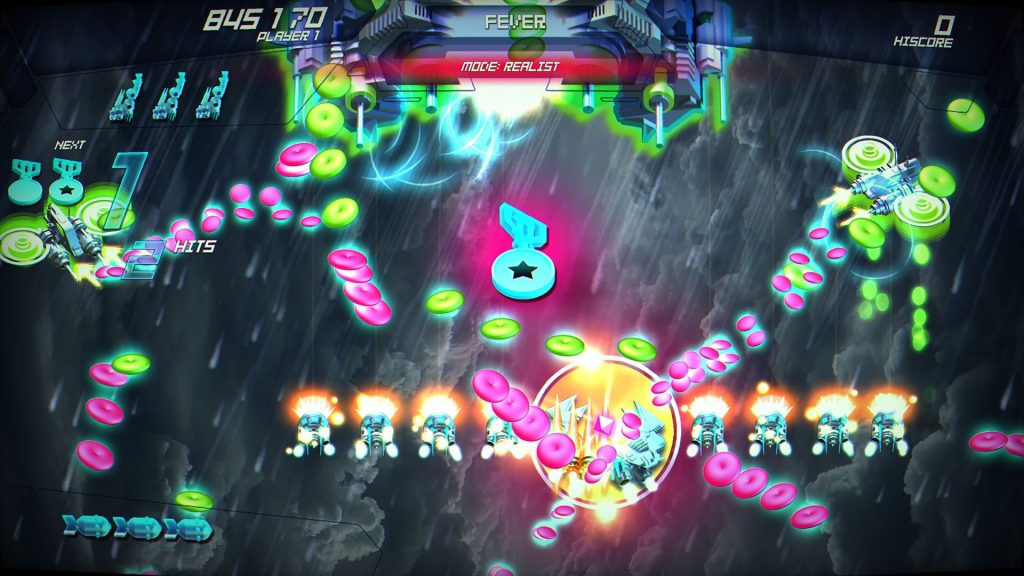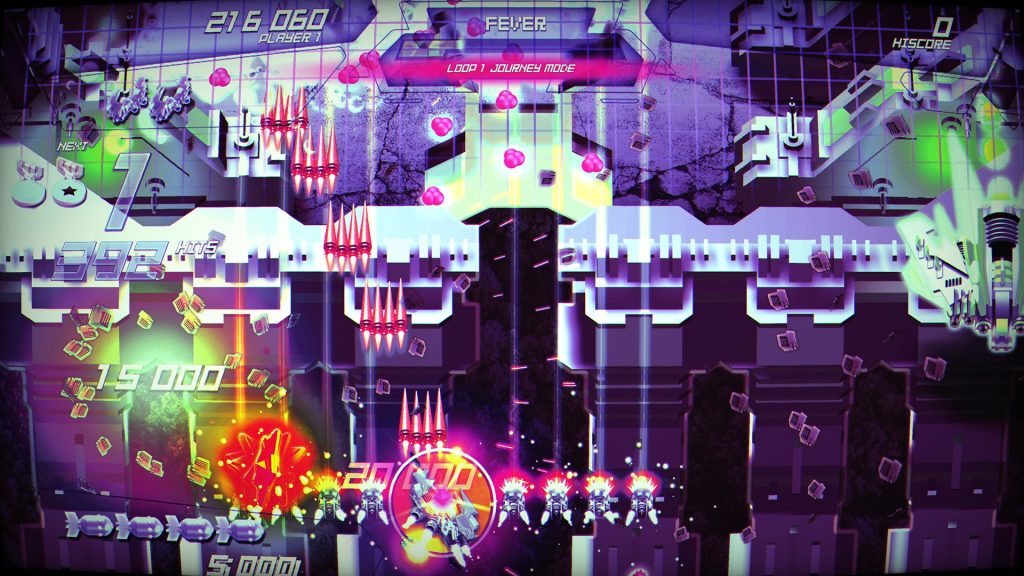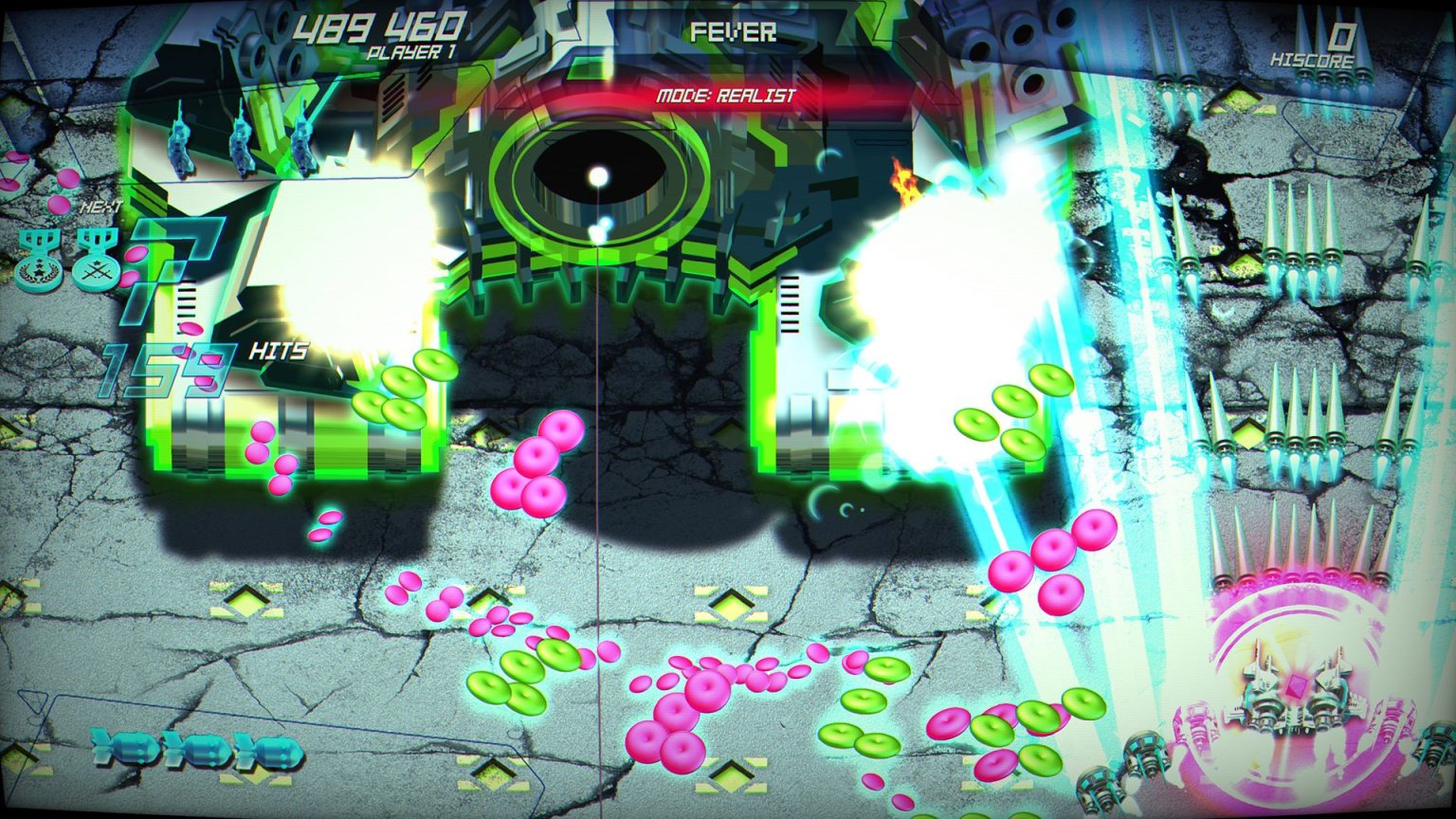This vertically scrolling shooter makes itself known by its stylish presentation that packs more shades of pink than the recent Barbie movie. It also quickly becomes evident that developer Last Boss 88 knows what makes for a rich experience, with around a dozen modes available from the outset ranging from Caravan Modes to a Super Easy Mode, recommended as the starting point. Visit the ‘how to play’ section and you’ll also be duly informed that the ultimate goal is to finish each difficulty setting with a single credit, instantly confirming that a 1CC run is possible.
This style and energy carry into the main game, with SHINORUNI set in widescreen (farewell, black borders) and featuring remarkably chunky sprites. Even the range of available spacecraft, manned by a variety of humanoid creatures, are sizeable. Worry not, as this doesn’t impact the hitbox size, which is merely a spinning jewel located at the ship’s centre. When it comes to shooting mechanics, there are no power-ups to speak of. Instead, each craft has its shot formation and can condense firepower at a button’s push – ideal for taking down bosses quickly. This also fills a fever gauge that sees a swathe of star-shaped collectables fill the screen. A trio of bombs per credit are carried too, and if you’re tracking high scores, you’ll need to use as few as possible. Or none, to be more exact.
The colour palette, comprising of neon pinks and electric blues, is eye-catching and helps the game to stand out in a currently crowded genre, but for long time play it isn’t ideal. A constant assault on the eyeballs, often I found myself longing for predominantly black star fields or a more muted palette. Not so much a case of style over substance; more like style over sense.

Every difficulty mode – ranging from the aforementioned Super Easy to Extra Hard – grants 99 lives. If that seems unnecessary, you’re correct. Even the harder difficulties can be beaten easily using fewer than twenty credits. I feel as if we can chalk this up as a surplus gimmick; one that harms the experience slightly. Setting the credit count at ten would have added additional challenge while leaving the level of accessibility unharmed. SHINORUBI is pretty welcoming to new players.
Despite the stylish presentation, clear cut goals, and wealth of modes, SHINORUBI is sadly lacking in variety and creativity within the core experience. Five stages with ensuing boss battles feature, lasting around 2-3 minutes each – culminating in a playtime of 10-12 minutes. While this is par for the course for the genre, standout moments are few. The stages blur into one another, almost feeling like a direct continuation, with little in the way of creative flair within the backdrops or enemy design. Every element is reused at least once, from armoured trains whizzing horizontally across the screen, to tank-like mini-bosses armed with missile launchers. The bosses, too, all take the form of screen filling spacecraft that move from left to right while spewing small projectiles. The only variety here comes from the final boss, who has a bullet absorbing shield.

Fortunately, there’s enjoyment to be had in exploring the extra modes, most of which demand a separate playthrough, ergo another 10-12 minutes per attempt. The colour schemes here are alternated, and rules vary depending on mode type. Many, for instance, omit the use of bombs. Caravan Modes for two stages feature, along with Scratch Mode – where bullets must be brushed past carefully to score – and a Cancel Mode where shooting an enemy will instantly remove its projectiles. Shield Mode adds a spinning orb to your arsenal, while Pink Pig Mode generates said porkers, and these must be collected before they vanish. Boss Rush Modes and a Journey Mode – which loops three times – are also available to try. There’s a lot to dip in and out of.
While I certainly didn’t dislike spending time with SHINORUBI, clocking up six hours before writing this review, I was often left wondering who’d get the most out of it. The presence of Super Easy and Easy Modes, along with the stupidly generous helping of continues, makes this ideal for beginners. Those looking to master a 1CC will likely appreciate the choice of difficulty modes too, although are likely to curse at some of the more maddening bullet formations – this a bullet hell shooter, make no mistake. Those who sit in neither camp, perhaps with a mere passing fancy for the genre, may find tedium settling quickly. You’d think something this slick would appeal to the masses, but it finds itself in a strange position where it comes off as a bit niche. SHINORUBI is, simply, a try-hard.
Last Boss 88’s SHINORUBI first launched on PC and is now available on consoles. Published by Red Art.

